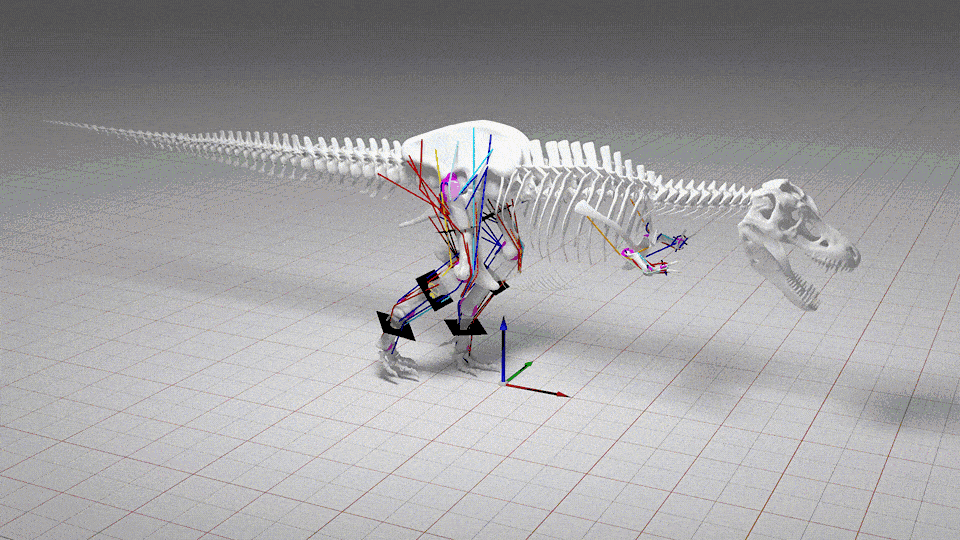When you purchase through links on our site , we may earn an affiliate commission . Here ’s how it work .
About 90 million year ago , a gigantic apex piranha — a meat - eatingdinosaurwith serrated shark - like teeth — prowled what is now Uzbekistan , according to a new subject of the behemoth ’s jawbone .
The 26 - infantry - long ( 8 meter ) beast weighed 2,200 hammer ( 1,000 kilograms ) , making it longer than an Africanelephantand lowering than abison . Researchers named itUlughbegsaurus uzbekistanensis , after Ulugh Beg , a fifteenth - hundred astronomer , mathematician and sultan from what is now Uzbekistan .

An illustration of the “shark-toothed” dinosaurUlughbegsaurus uzbekistanensis, who lived in what is now Uzbekistan about 90 million years ago.
What caught scientist by surprise was that the dinosaur was much big — twice the length and more than five times heavy — than its ecosystem ’s previously known apex predatory animal : a tyrannosaur , the researcher found .
Related : The 10 coolest dinosaur findings of 2020
The ball of jawbone was line up in Uzbekistan ’s Kyzylkum Desert in the 1980s , and researcher rediscovered it in 2019 in an Uzbekistan museum collection .

Two late Cretaceous dinosaur apex predators: a carcharodontosaur (left) and a tyrannosaur (right).
The partial jawbone ofU. uzbekistanensisis enough to suggest that the animate being was a carcharodontosaur , or a " shark - toothed " dinosaur . These carnivores were first cousin and competitors of tyrannosaur , whose most famous species isTyrannosaurus king .
The two dinosaur groups were fairly similar , but carcharodontosaurs were by and large more slender and lightly - built than the heavyset tyrannosaurs , said study Centennial State - researcher Darla Zelenitsky , an associate prof of palaeobiology at the University of Calgary . Even so , carcharodontosaurs were normally big than tyrannosaurus dinosaurs , gain weights greater than 13,200 pound ( 6,000 kg ) . Then , around 90 million to 80 million long time ago , the carcharodontosaurs vanish and the tyrannosaurs grew in size , taking over as apex predators in Asia and North America .
The novel finding is the first carcharodontosaur dinosaur reveal in Central Asia , the researchers noted . Paleontologists already knew that the tyrannosaurTimurlengialived at the same time and place , but at 13 foot ( 4 m ) in length and about 375 hammer ( 170 kilo ) in weight , Timurlengiawas several times smaller thanU. uzbekistanensis , suggesting thatU. uzbekistanensiswas the peak vulture in that ecosystem , gobbling up horn dinosaurs , long - necked sauropods and Struthio camelus - like dinosaur in the locality , the team aver .

An illustration of the enormous carcharodontosaurUlughbegsauruswith the smaller tyrannosaurTimurlengia.
" Our discovery indicates carcharodontosaurs were still prevalent vulture in Asia 90 million years ago , " study lead researcher Kohei Tanaka , an assistant prof at the Graduate School of Life and Environmental Sciences at the University of Tsukuba in Japan , told Live Science in an email .
Peter Makovicky , a prof of paleontology at the University of Minnesota who was not involved in the study , agreed thatU. uzbekistanensiswas belike at the top of the local food chain . " I think this os is so heavy that this would have been a very large predatory dinosaur and very in all likelihood the acme predatory animal in its ecosystem , " Makovicky told Live Science .
— photo : The first dino fossil found in Washington

This chunk of jawbone is all that paleontologists have of the ancient dinosaur Ulughbegsaurus.(Image credit: Tanaka et al 2021)
— In Photos : Bizarre ' chiropteran dinosaur ' discovered in China
— Photos : bantam Tyrannosaurus rex dinosaur was about as big as T. rex ’s skull
TheU. uzbekistanensisfinding is the last known occurrence of a carcharodontosaur and a tyrannosaur living together before the carcharodontosaurs die out , the squad said . The squad found thatU. uzbekistanensishas alone bony bumps above its teeth . However , it also has bony ridges on the sides of its jaw that were similar to the 79.5 million - yr - old tyrannosaurThanatotheristes degrootorum(whose name means " harvester of death " ) from what is now Canada . It ’s ill-defined why both species have these ridge , but perhaps it ’s a case ofconvergent evolution , when metal money that are n’t closely relatedevolveto have similar characteristics , Zelenitsky said .

This map shows where the Ulughbegsaurus fossil was found in Uzbekistan.(Image credit: Tanaka et al. 2021)
The work was published online Wednesday ( Sept. 8) in the journalRoyal Society Open Science .
Originally release on Live Science .

A reconstruction of Ulughbegsaurus’s upper jaw and teeth.(Image credit: Dinosaur Valley Studios)

Study researchers Kohei Tanaka (left) and Darla Zelenitsky (right).(Image credit: University of Calgary)

















